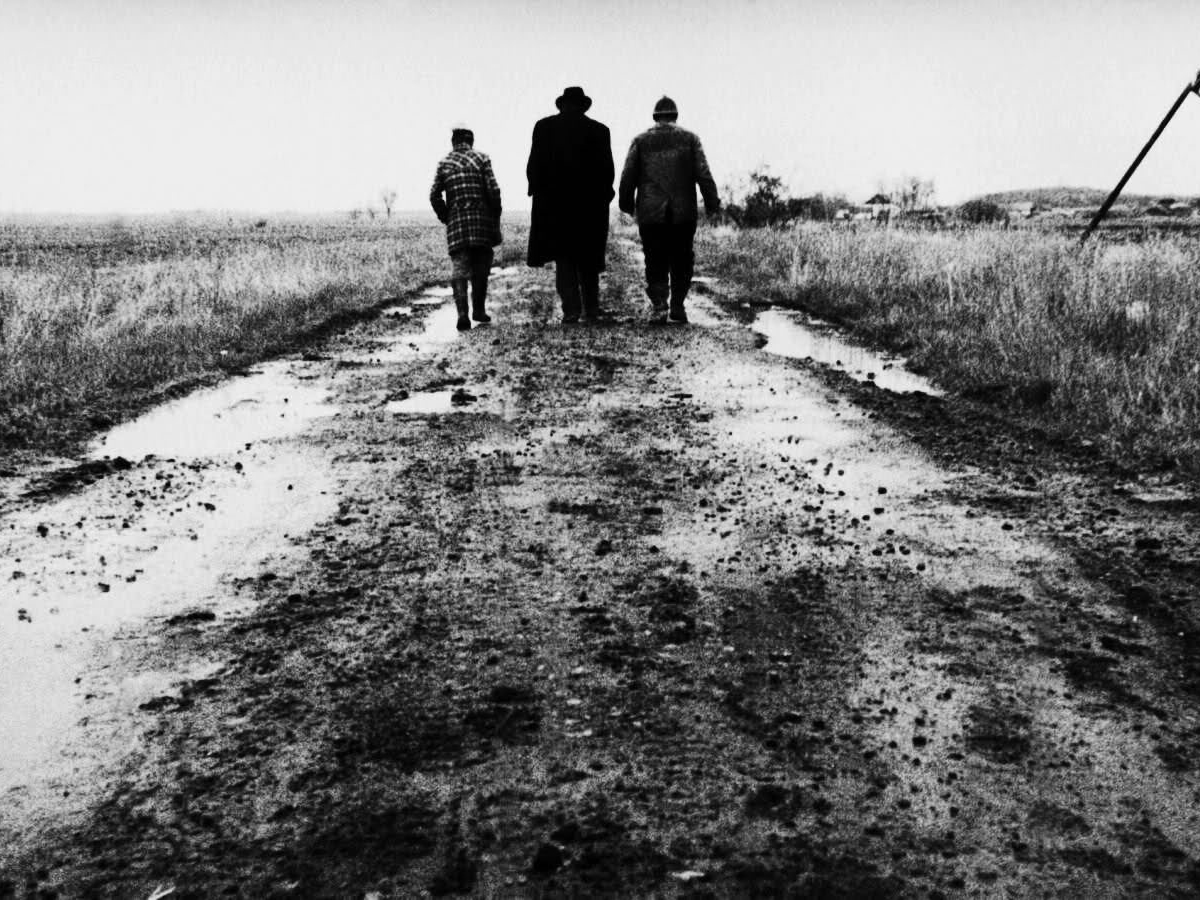
Based on the book by László Krasznahorkai, Sátántangó follows members of a small, defunct agricultural collective living in a post-apocalyptic landscape after the fall of Communism who, on the heels of a large financial windfall, set out to leave their village. As a few of the villagers secretly conspire to take off with all of the earnings for themselves, a mysterious character, long thought dead, returns to the village, altering the course of everyone’s lives forever.
“God is not made manifest in language, you dope. He’s not manifest in anything. He doesn’t exist... God was a mistake. I’ve long understood there is zero difference between me and a bug, or a bug and a river, or a river and a voice shouting above it. There’s no sense or meaning in anything. It’s nothing but a network of dependency under enormous fluctuating pressures. It’s only our imaginations, not our senses, that continually confront us with failure and the false belief that we can raise ourselves by our own bootstraps from the miserable pulp of decay. There’s no escaping that, stupid.”
From László Krasznahorkai’s novel Sátántangó1
“Damnation left Karrer barking in the face of a dog, like a final image of the human condition. Before the face of the same actor is made to appear behind a window, Sátántangó opens with a long sequence shot, showing us a herd of cattle leaving their stable. Cows are animals endowed with a weak symbolic power. It is, therefore, as an actual herd, and not as an image of herd mentality, that they must appear to us. Their inaugural presence is certainly given without explanation, but we can justify it a posteriori: with the departure of these cows, the last stock of a collective farm is being liquidated. And it is the money from this sale that will be at the center of the intrigue.”
Jacques Rancière2
“Door de omvang van de speelduur, de beschouwingen en de shotlengtes wordt meestal in monumentale bewoordingen gesproken over Sátántangó. Maar schuilt de duivel niet in de details? (...) Ondanks een zeker fetisjisme rond Béla Tarrs cinema als authentieke ervaring heeft de wereld die hij creëert in feite een artificieel en uiterst geconstrueerd karakter. De kijker wordt, net zoals alle personages in Sátántangó, in zekere zin beduveld.”
Ruben Demasure3
- 1László Krasznahorkai, Sátántangó (New York: New Directions, 2011) [Translated from Hungarian by George Szirtes]
- 2Jacques Rancière Béla Tarr. The Time After (Minneapolis: Univocal - University of Minnesota Press, 2011)
- 3Ruben Demasure, “Sátántangó. Raamvertelling,” Sabzian, 10 mei 2015.

